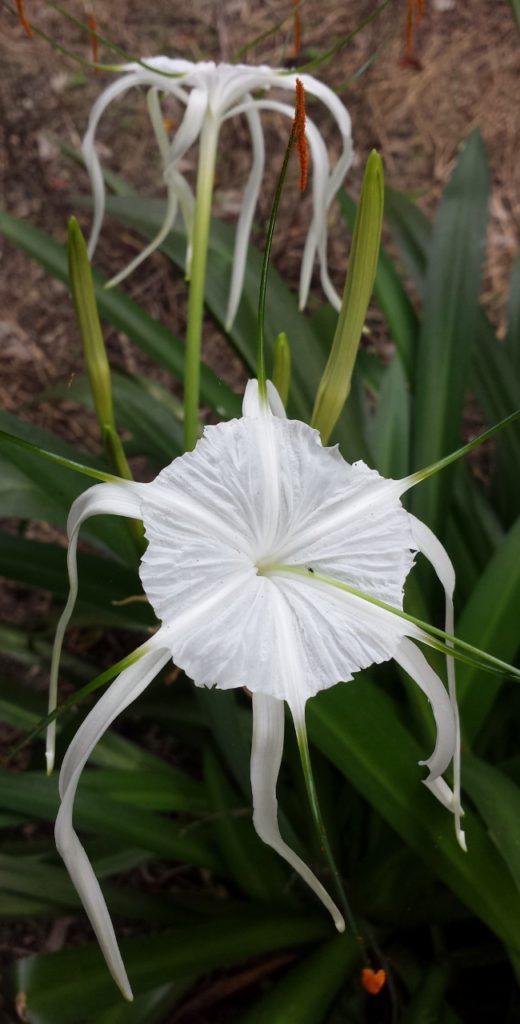
Mangrove Spiderlily
Hymenocallis latifolia
Mangrove Spider Lily is one of the most drought and salt tolerant groundcovers available. It grows from Volusia County south through the keys among the coastal dunes and raised areas within mangrove swamps. It can tolerate some salt spray and flooding as well as full sun to moderate shade.
The strap shaped leaves are three inches wide and reach almost three feet tall before bending over. Clusters of numerous fragrant white flowers are produced at the top of a three or more foot fleshy stalk in mid summer. There is a membrane connecting the filaments producing the appearance of an umbrella pushed upwards by high winds.
The seeds are like green bulbs and each produces one plant. Several are found at the tip of the flower stalk in late summer. These seedlings take one to two years to produce a sizable plant. It may be better to just divide a clump of bulbs to get more plants.
One bulb will become a cluster of three or more in one year and a mass of many by the third or fourth year. Each mass can be three feet across. Plant two to three feet apart for a continuous bed of leaves and flowers.
Since this is a member of the Amaryllis family, do not eat it or get sap on your skin. Moths visit the fragrant flowers at night and lubber grasshoppers, which are red and yellow, eat the leaves.
The poisonous is stored in its body making anything that tries to eat it sick. Remember that red, yellow and black are warning colors; think black widow spider, coral snake, atala hairstreak butterfly and larva.
Try using Mangrove Spider Lily in the driest parts of your planting. If you are doing a beach planting or creating a beach or Keys theme, individual or groups of these plants give a nice texture change and lovely flowers. Keep in mind that the leaves melt down in winter and may need to be removed until new, attractive growth takes their place.
For a natural look; mix with Beach Cocoplum, Sea Lavender, Bay Cedar, Sea Oats, Beach Verbena, Dune Sunflower, Beach Elder, Coontie, Seaside Joyweed, Gaillardia, Blue Curles, Southern Beebalm and other coastal plants.